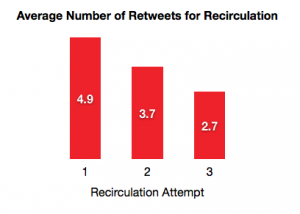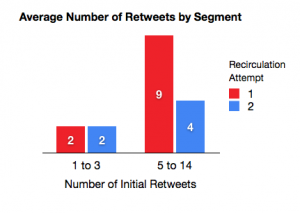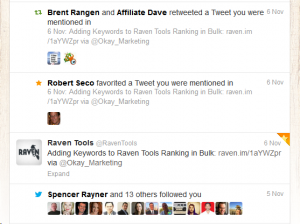People ask this question all the time.
“Hey, I just spent x hours writing this blog. I can only promote it once and that’s it, right?”
People have argued about this idea since, well… since Twitter!
On the one hand, some famous tech superstars like Guy Kawasaki often repost the same thing every eight or so hours, up to 3 times a day. In Kawasaki’s mind, this is how he is able to be sure that all of his fans will get to see what he talks about.
Sound extreme? It did to us, too.
Fortunately, there is only one Guy Kawasaki. The rest of us can consider reposting again to social channels, but we can avoid taking it to that level. Instead, we could look at how more modest social media people fare with their reposts.
Tomasz Tunguz, a venture capitalist, performed a series of experiments on his twitter account, and he came up with a couple interesting conclusions:
1. Each repost is ¾ the last post.
Tomasz found that when he posted the exact same information, each repost earned around 75% engagement when compared to the last tweet.
2. Retweets are a great marker for success.
He broke his tweets into 2 uniquely behaving groups: Tweets with 1-3 retweets and tweets with 5-14 tweets. By reposting a tweet in the first group, the numbers of retweets stayed relatively the same. But in the second group, the repost was retweeted about 50% less. With this in mind, “the initial retweet count is likely a reasonable first-pass leading indicator of recirculation success.”
3. Repost the stuff that is already getting a bigger bang. Don’t sweat the stuff that doesn’t get movement on the first post.
Okay Marketing’s Brian Jackson has similar experiences with his posts in any social channel. A huge fan of Buffer, the social media app, Brian shows us in his blog how he gets better exposure just by reposting his most timeless (also known as evergreen) content.
4. It’s a lot easier to get shares from content that doesn’t fade.
Another advantage of reposting social content is that it can be scheduled in and around the content you personally transmit, and this can help you from looking or sounding spammy. Social syndication software like Buffer, Hootsuite and Sprout Social allow you to schedule your content. It also lets you auto-post at the best calculated time for engagement.
There can be several gains for taking the time to repost your evergreen content. So long as we lean back from Kawasaki’s ‘master blaster’ approach to reposting content, we can get better ROI for the information that matters to your audiences.
Sign-up For FREE Updates





